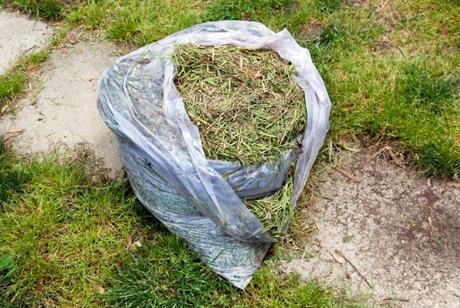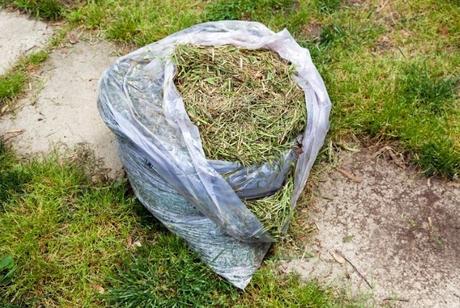Can You Compost Grass Clippings?
All grass has to grow, regardless of where it is planted. To keep the home neat, you definitely will have to clip the grass, meaning you will end up with grass clippings, not knowing what to do with them. This article talks about grass clippings, and how they can be used to make compost.

Are Grass Clippings Compostable?
Sure! Grass clippings make excellent compost and require less from the composter. It is very easy and essentially, you do nothing. It is as simple as leaving the clippings on the lawn after mowing instead of hooking up a bag.
However, remember, composting grass clippings is an added and sometimes an unnecessary chore since if you cut your lawn at the proper height and with the proper frequency, the clippings will decompose naturally on the lawn without posing any harm.
Freshly cut grass is considered a ‘green’ material in the compost pile, and a compost pile needs to have a proper balance of both green and brown material, for it to decompose properly. As such, if you intend to compost freshly cut grass, be sure to add browns such as dry leaves.
However, if you have allowed the grass clippings to dry completely before adding them to the compost pile, they will be considered brown material, as they will be brown.
The other concern about composting grass clippings is if the grass has been treated with herbicides, and how it will affect the compost. Residential lawn clippings may have herbicides that are legally used on the lawn and should be able to break down within a matter of a few days, thereby posing no further danger to other plants that receive compost made from these grass clippings.
However, for grass clippings from a non-residential location such as a farm or a golf course, there is a significant chance that the herbicides used on these grass clippings may take weeks or even months to break down. As such, they can and will pose a threat to plants that receive compost made from these kinds of grass clippings
Is Rotted Grass A Good Compost?
Yes, and No!
Freshly cut grass clippings are considered green material and their role in a compost pile is to provide nitrogen or protein. Like other green materials, they also tend to heat a compost pile up because they help the microorganisms in the pile grow and multiply quickly. The browns, on the other hand, are carbon- or carbohydrate-rich materials.
The browns are to be the source of food for all the soil-dwelling organisms that will work with the microbes to break down the contents of your compost pile. Also, the browns help to add bulk and allow air to filter through the pile
Rotted grass has already gotten where composting would take it, rotting. When getting to this stage, one of at least four things has happened: changes in enzymes, changes in chemicals, microbiological activity or macrobiological activity.
Most causes of rot are beneficial and harmless in a compost pile. However, there are a few that may spread disease or encourage pests. Macrobiological activity, in particular, disqualifies some material from composting because it refers to damage by visible pests like rodents and insects.
As such, if the rot to the grass was due to such, it should not be composted. However, if the rot was due to enzyme, non-harmful chemicals or microbiological activity, it can be composted.
How Long Does It Take For Grass Clippings To Compost?
Well, it is dependent on several factors.
The grass is 80% water, so it can take only a few weeks before the clippings decompose and enrich your soil, releasing valuable nutrients. If you allow grass to decompose on your lawn, it will be gone soon, usually within a few weeks but if you compost grass in a pile and turn regularly, it will turn into compost in a few months.
To produce clippings that decompose readily, allow your grass to grow higher and never cut off more than the top one-third. This means mowing more frequently but cutting off less. To compost grass in the yard quicker, mow every five days! If you’re composting grass in a pile, get the ratio right, turn your pile weekly and water when dry.
Can You Make Compost From Just Grass Clippings?
Well, yes, you can, although you will end up composting it alongside other materials.
As already mentioned, freshly cut grass is a green material, in the compost pile, and you need to mix both green and brown materials, to have a proper carbon to nitrogen mixture. When the ratio of the two is sufficient, it will lead to good compost, in the appropriate amount of time.
As such, you will have to mix grass with another brown material for it to work properly. If the grass you are bringing in is dry, making it a brown material, you will have to add another green material for the mixture to become ideal.
The problem with mixing green and brown grass, in the name of composting grass clippings alone, is that they might not provide all the nutrients required by the soil. Some other materials will be rich in certain minerals, that grass cannot just provide the best.
For instance, banana peels are rich in potassium and potassium fertilizers help in the development of strong roots and stem for plants, in addition to regulating enzymes in plants, as well as often being used as a pest repellent in gardens.
Be sure to mix the grass clippings, with other materials, either green or brown. Also, as with mulches, a thick layer of grass clippings in a compost pile will lead to bad odors from anaerobic decomposition, so mix up the grass clippings with dry materials such as leaves or straw
There is also a problem with tossing the grass into the composting pile without mixing it. For fresh-cut grass, it tends to form a mat after being cut and piled and simply tossing grass clippings into your compost pile can result in a slow and/or smelly compost pile. This is mainly because grass can become compacted and overly wet, preventing aeration and leading to the death of the microbes that make composting happen.
Are Grass Clippings Good For The Garden?
Grass clippings are excellent for the garden.
The one major area they are excellent at is mulching. Fresh or dried grass clippings can be collected and be put as mulch around flowers, vegetables, trees and shrubs. The mulch can help reduce weeds, moderate soil temperatures and most importantly, conserve moisture.
However, for them to be effective in the garden, do not apply more than one to two inches of grass clippings at one time, do not use grass clippings if the lawn was recently treated with a herbicide as it could harm the plants, and use dry clippings since wet grass clippings can mat down, reducing reduce oxygen and moisture from getting down into the soil.
The other valuable way that grass clippings could help the garden is through composting. Once such grass clippings are added into the compost pile or tumbler, they will, alongside other materials, compost and will offer a nutrient-rich result, that can be added to vegetables, flowers and other plants. It is good to know that grass clippings are a great source of nitrogen and more to that, they break down quickly.
7 Creative Ways To Make Use of Grass Clippings
1. As livestock feed
This goes without saying, but if not being used for mulching or composting, grass clippings are excellent livestock feed. Silage from grass clippings has been found to have a protein content of 2%. You could use your electric or hand-push mower grass to supplement diets for herbivores such as goats, guinea pigs, sheep, rabbits and cattle.
However, do not use wet clippings as they spoil quickly and can make animals sick. Also, do not feed them grass clippings from grass that was recently sprayed with herbicides, as it could also make the animals sick, and could even kill them
2. Leaving them on the lawn
It is perfectly okay to leave grass clippings on the lawn, every now and then since they are a great source of nitrogen and can act as a natural fertilizer for the lawn. Recycling grass clippings back into your lawn can account for about 25% of its annual nitrogen requirements.
However, leaving too many clippings on the lawn can result in the grass burning and subsequently losing its color. Therefore, make sure you are only cutting a short amount off the grass when you plan to leave it on the lawn.
3. Liquid organic fertilizer
It is possible to make your liquid plant feed by steeping a couple of handful of cut grass in a bucket of water. All of the beneficial nutrients like potassium, nitrogen, phosphorus and amino acids will leach into the water. After a few days, you can strain out the liquid and feed your plants with it.
Be sure to keep the water indoors to reduce mosquitoes or use an organic mosquito control option. Although the resulting liquid fertilizer will smell terribly after about two weeks, the plants will love a dash of this to the watering can as you water.
4. Mulch for garden beds
Grass clippings can be used in garden beds and as a mulch for vegetable gardens. The mulch helps retain moisture in the garden, blocks out weeds and adds nutrients to the soil. The nitrogen and potassium within the clippings also helps to provide fertilizer requirements to your plants
5. Raised bed gardening
This is one of the best ways to garden. To improve soil quality and boost your yield, consider utilizing the Lasagna Method of soil mixing, which involves creating several layers of material to fill the bed and nourish your plants.
In the lower regions of the beds, layer one part grass clippings with two parts shredded leaves, which will slowly compost over time into rich soil. The clippings should be layered thinly to prevent matting. Once the beds are almost full, which is within six to twelve inches from the top, add a compostable barrier like cardboard and fill the remainder with your chosen soil mix.
6. Mulching
Grass clippings, be they fresh or dried, make an excellent organic mulch that contains high amounts of nitrogen, something all plants need to grow and flourish. Organic mulches also help retain moisture, suppress weeds, keep the soil cool and improve its fertility.
Just lay a quarter-inch thick layer of fresh clippings around a flower and plant beds for a free, organic mulch. A thicker mulch will not be able to break down fast enough and could smell as it decomposes.
7. Composting
Once you prepare and correctly treat the grass clippings, you will be able to recycle the nutrients from the grass in other areas of your garden. This can happen whether you leave the clippings on your garden, or if you compost them first.
References:
https://extension.umn.edu/lawncare/what-do-lawn-clippings
https://lawnsolutionsaustralia.com.au/lawn-care/grass-clippings/
https://www.motherearthnews.com/organic-gardening/7-ways-to-use-grass-clippings-zbcz1605


